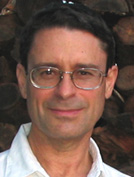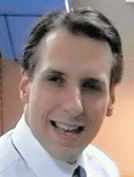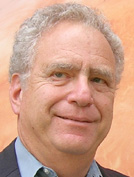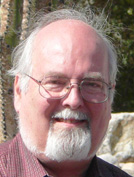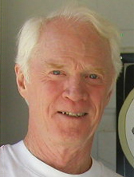Tunguska: 100 Years and Counting

Trees near the Podkamennaya Tunguska River in Siberia still looked devastated nearly two decades after a large meteorite exploded above the ground in June 1908.
Over the years, all kinds of extraordinary causes have been invoked to explain the Tunguska event: a titanic explosion of subterranean methane, nuclear fusion from the deuterium in a comet's ices, collisions of Earth with a small black hole or antimatter — and, of course, the crash of an alien spacecraft.
Whatever the particulars, impact specialists now realize that Tunguska was a wake-up call to the scale of devastation that even a small asteroid or comet could wreak. And cosmic oddsmakers now predict that collisions of this magnitude occur every 1,000 years or so. So, in some sense, we're lucky that Tunguska happened so recently. Scientists have been able to assess the devastation firsthand and ponder how to avoid a "next time."
To mark this remarkable anniversary, Sky & Telescope asked a select group of solar-system specialists to reflect on Tunguska's legacy. Here's what they had to say:
|
Steven Ostro specializes in planetary radar astronomy at the Jet Propulsion Laboratory in Pasadena, California.
Steven Ostro |
It would be hard to overstate the historic importance of Tunguska. It's made us aware that Earth exists in an asteroid swarm, that asteroid and comet impacts have had enormous importance in the history of Earth and the origin and evolution of life, and that the near-Earth-object collision hazard is a uniquely low-probability, high-consequence, natural hazard that demands attention because it is amenable to prediction and prevention. We know that collisions will happen in the future, and we also know that enormous numbers of near-Earth asteroids are energetically and financially more accessible to spacecraft than any other objects in the solar system. They are key to any optimistic vision of humanity's future in space. We are fortunate to be living in an extraordinary time of discovery and exploration of NEOs. But how would our consciousness of NEOs be different if Tunguska (and Meteor Crater in Arizona, and Comet Shoemaker-Levy 9) had not happened? These events truly were cosmic gifts to humanity. |
|
The Tunguska event represented a wake-up call to the hazard of cosmic impacts. Or it should have. But it landed in a nearly uninhabited region, and the chaos of the First World War, the Russian revolution, and the ensuing civil war prevented scientists from quick follow-up, to visit the site and assess the nature of the impact. Until quite recently the explosion was generally attributed to the impact of a comet. That idea was understandable when comets were the only objects we knew that intersected Earth's orbit. Now we recognize it to be the impact signature of a stony (not icy) object, a result that's also consistent with the extreme rarity of small comets relative to stony asteroids. But there are still some mysteries, primarily concerning the expected frequency of impacts of this scale. The average interval seems to be a millennium or more, corresponding to a negligible danger from impacts of this size. Tunguska-class impacts are unquestionably real, however, and they raise a public-policy issue of how much money we should spend to predict, and defend against, the next such cosmic collision. |
David Morrison is a Senior Scientist at the NASA Astrobiology Institute in Mountain View, California.
David Morrison |
|
Jon Giorgini is a Senior Analyst in the Solar System Dynamics Group at the Jet Propulsion Laboratory in Pasadena, California.
Jon Giorgini |
Although the impact hazard has evidently played a substantial role in the history of Earth, the day-to-day danger can seem remote. It exists over inhumanely long time-scales and is talked about using tiny, arcane probabilities that seemingly border on alchemy. As a probability 1.0 event, Tunguska was where "possible" became "actual". It occurred at a time and place where it could be seen yet left surviving witnesses and evidence of what happened. A better-placed example could hardly have been engineered. One can point to it and say "This is what I mean!" — a link from the brilliant meteor-flashes of sand grains everyone can see at night to something rarer but more serious. Tunguska provides something real and understandable to everyone and a hype-resistant calibration point that can be measured and investigated by scientists. |
|
The most amazing thing about Tunguska is to imagine the object striking 8 hours earlier or 8 hours later. That could have changed it from an obscure event unnoticed in remote Siberia to one of history's great recorded disasters, killing thousands of people and causing enormous property damage. Would that have accelerated our extraterrestrial awareness of natural events or induced a mystical or religious explanation of the unknown? I'm not sure — I think epiphanies in our understanding happen only when the groundwork is laid — when bodies of knowledge come together to make what was once unbelievable now seem possible. Tunguska wasn't what made us understand the significance of cosmic impacts to Earth's history. That took accumulating a body of knowledge from various fields including astronomy, geology, geochemistry, celestial mechanics and space science. Then only could we go back to Tunguska and say "eureka." |
Louis Friedman is Executive Director of the Planetary Society in Pasadena, California.
Planetary Society
Louis Friedman |
|
Luca Gasperini (left) is a researcher at CNR's Institute of Marine Science in Bologna, Italy. Christian Koeberl (right) is a geophysics professor at the University of Vienna in Austria.
CNR-ISMAR; Univ. of Vienna
|
Luca Gasperini I'm in Moscow now attending a Tunguska centenary meeting. Soon our team will depart for Siberia and the Lake Cheko area, where we would like to carry out some measurements and to prepare for a full-up expedition next year, assuming it will be (hopefully) funded. Knowing what happened in Tunguska is important in several respects. But mostly it is frustrating to have so many different interpretations of an event that took place only 100 years ago. The Tunguska event is a unique opportunity to test our predictive models with real data. I will keep you informed about our progress. Christian Koeberl Tunguska is an important event because it helps us understand the danger from airbursts at the lower end of the diameter scale for near-Earth objects. In fact, airbursts are probably an underestimated danger, in the sense that we only recently realized that such events happen ith a fairly high frequency — yet they leave basically no traces after as short as 100 years after the burst. |
|
On a hot summer's day in a Mid-Atlantic state of the U.S., it's hard to anticipate a natural disaster of any kind, much less one from outer space. Yet that's exactly what happened 100 years ago today. It's a certainty that objects like Tunguska will collide with Earth in the future. Unfortunately, we can't predict when and with what magnitude these collisions occur. Modern upper-atmospheric surveillance finds that airbursts from incoming fragments of near-Earth objects occur roughly once a year. Bigger blasts are far less frequent statistically, but they're unpredictable. What can we do, knowing that such an event can happen again? The best offense is a good defense, so the first things to do are to monitor the number and nature of hazardous objects, and to track the orbital evolution of NEOs hundreds of years into the future to identify those that might collide with Earth. That's what NASA is doing in its Near Earth Object program. Also, from time to time the U.S. Congress holds hearings on the impact threat and calls on scientists to issue reports of the risk. On a hot summer's day, it is possible to think about and plan for possible hazardous impacts in the future. Let's keep our heads and continue to assess our plans and policy. Hopefully, our deliberate and thoughtfully designed programs will allow us to detect any hazardous incoming body and take preventative action. |
 Lucy McFadden is a professor of astronomy at the University of Maryland in College Park, Maryland.
Lucy McFadden |
|
Clark Chapman is a senior scientist at the Southwest Research Institute in Boulder, Colorado.
SwRI Boulder
Clark Chapman |
Tunguska happened long ago, in a remote spot, so we only know crudely what happened. It was surely the largest cosmic impact our planet endured in "modern" times. Estimates that it was a 10- or 20-megaton explosion imply an object of a size that we now realize collides with Earth only every couple thousand years or so. So, despite being "statistics-of-one," it's suspicious that it happened as recently as a century ago. A way to reconcile this discrepancy is if Mark Boslough's computer simulations correctly predict that the damage resulted from a smaller explosion, perhaps equivalent to only 3 megatons. Thus Tunguska's message may be that smaller bodies, which impact Earth much more frequently than large ones, can be much more damaging than previously thought. We have discovered only a tiny percentage of objects that could create future Tunguskas — but within a couple of decades, new telescopic searches may reveal 100,000 of them! However, because we'll have uncertainties about their orbital paths, we will often be unable to rule out possible future impacts. Consequently, public entities will be forced to assume responsibilities for assessing the impact risks and for any required mitigation measures, like evacuation of ground zero or diversion of the threatening NEA. Sooner or later there will be another Tunguska. But long before one actually hits, many threats of such a strike will come and go: Tunguska-size discoveries that either narrowly miss Earth or that temporarily have scary chances of striking us until their orbits are pinned down. |
|
Tunguska is a great reminder of what we will likely have to deal with in the next 10 years or so. We now know statistically that there are some 600,000 or more "Tunguskas" out there of which we have to date discovered less than 1%! While for those of us who have been working this issue it is clear that we can deflect such impact threats … the primary prerequisite is that we know one is coming! We can't protect ourselves against something we don't know about. So the primary "message" of Tunguska is that it happened, it will happen again, and we can prevent it. but we have to find and track these smaller NEOs. Congress has spoken. They've told NASA to crank up a more powerful search program. NASA, however, has refused to act — or even to comply with Congress's request to recommend a search strategy and to estimate the budget needed to support it. Their excuse? They don't have the budget to support it! |
Rusty Schweickart is a former Apollo astronaut and chairman of the Board of Directors of the B612 Foundation in Houston, Texas.
Rusty Schweickart |
Thanks, NASA.



